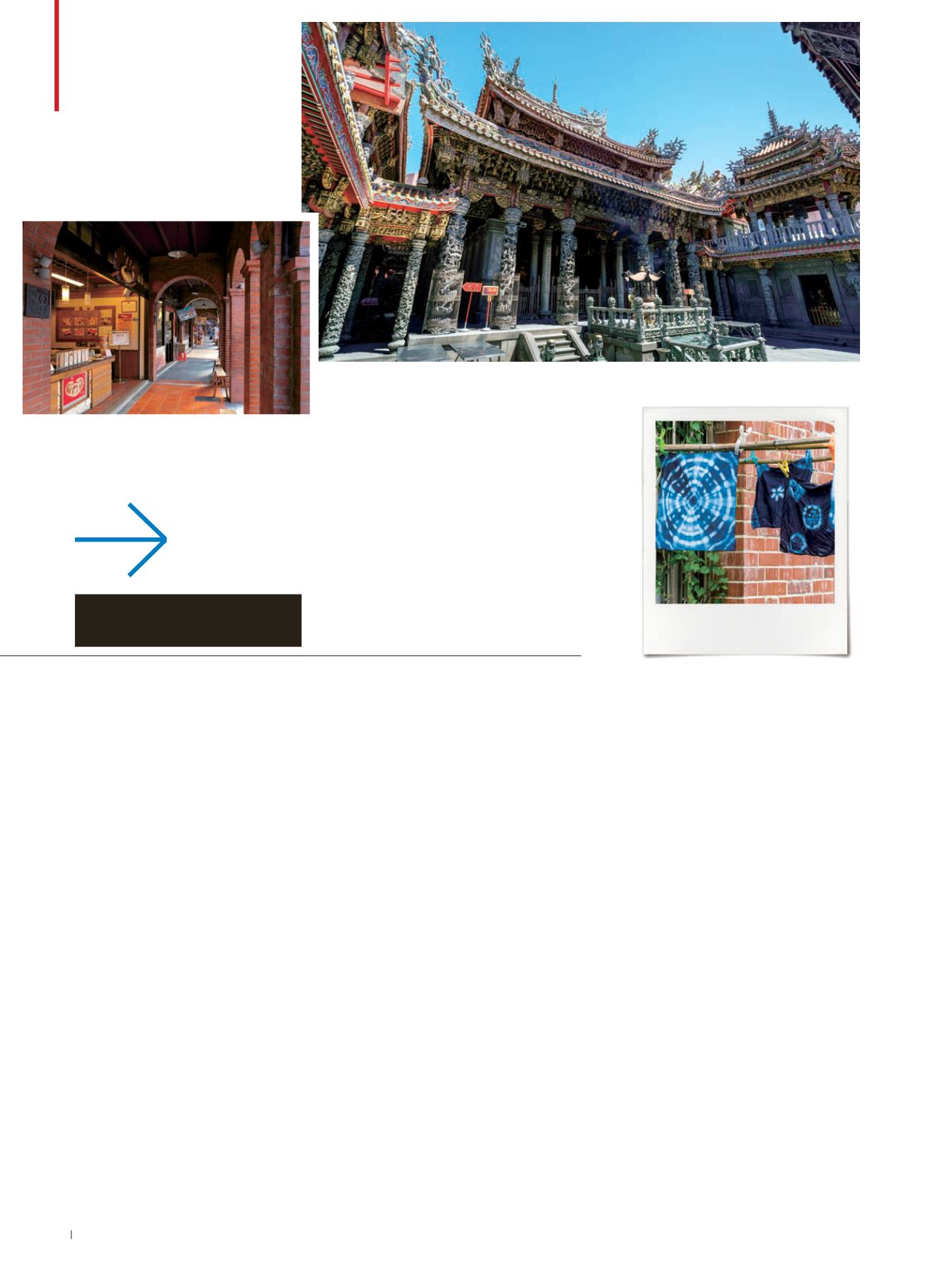
From the late 18th century until well
i n t o t h e 2 0 t h c e n t u r y, S a n x i a ’s
c omme r c i a l h u b wa s k n own a s
Sanjiaoyong Street. John Dodd, an
Englishman who played a key role in
the development of Taiwan’s tea
industry in the final third of the 19th
century, is believed to have come here
on business. By 1945, when the official
name was changed to Minchuan Street,
road networks were steering commerce
elsewhere. Many of the photogenic
shop-houses fell into disrepair, a decline
not arrested until the authorities
launched a major renovation effort in
2004.
The thoroughfare’s original name
has been restored along with its century-
old red-brick arcades. Ornate baroque-
style relief decorations were sandblasted.
Hundreds of mud bricks were made by
hand to fix disintegrating internal
p a r t i t i o n s . S a g g i n g r o o f s we r e
straightened. The street itself was paved
with slabs of granite that were chiseled
rather than machined. Unavoidable
modern features, such as manhole
covers and house numbers, were made
to look as traditional as possible.
Entrepreneurs have repopulated the
street. Stores here sell everything
excursionists could possibly want,
including Sanxia’s famous
niujiao
(“ox
horn”) bread. These chewy croissants
come in a variety of flavors.
For some visitors, Sanjiaoyong
Street is not Sanxia’s top attraction. At
the northern end of the street stands
Zushi Temple (open 4am – 11pm daily),
a treasure house of religious art. This
shrine was founded in 1769, yet nothing
here is especially old. Its value instead
derives from the post-World War 2
efforts of Li Mei-shu, a local politician
and acclaimed painter who set the
highest standards while supervising
restoration work between 1947 and his
death in 1983.
The number and quality of wood
and stone carvings is astonishing. There
are crabs and other crustaceans,
d r a g o n s , f i s h , ow l s , p a n g o l i n s ,
elephants, sages, soldiers, and a whole
orchestra of musicians. The ceiling of
the central chamber, where incense is
offered to Zushi, is breathtakingly
elaborate.
Zushi Temple is often filled with
people and incense smoke, so those
seeking a more contemplative environment
may wish to drive 15 minutes south to
Baiji Xingxiu Temple.
Located near the top of 740m-
high Mount Baiji, the decor and design
of this house of worship embody Taoist
ideals of simplicity. Each day, dozens
o f peop l e come he r e t o unde rgo
shoujing
, a “fright-soothing” ceremony
which many Taiwanese believe can
relieve trauma and anxiety. Other
visitors prefer to hike or simply enjoy
the view.
PHOTOGRAPHY: HARRY HUANG / CHIH-HSUEH WU / HSIN-HSIEN CHUANG
Sanxia
Sanxia is best known for the ornate Zushi
Temple and the redbrick arcades of historic
Minchuan Street.
ख़ࢪᄽၾࠠอ
ࡌ
ూٙϼd
މ
ɧࢠ௰աᛇ
ڎ
ٙ
౻ᓃf
44
enVoyage
Taiwan
Travels


